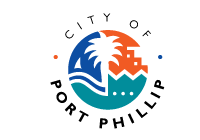South Melbourne
Language used at home
In South Melbourne, 19.605 of people used a language other than English at home in 2016.
South Melbourne's language statistics show the proportion of the population who use a language at home other than English. They indicate how culturally diverse a population is and the degree to which different ethnic groups and nationalities are retaining their language.
South Melbourne's language statistics should be analysed in conjunction with Country of Birth and Proficiency in English to assist in identifying specific cultural and ethnic groups in the area and the services required by the multicultural community.
Please note: Due to ABS rules regarding perturbation of data to protect the confidentiality of individuals, counts of individual language groups and totals derived from them may differ slightly from those published by the ABS.
Derived from the Census question:
'Does the person use a language other than English at home?'
Total population
Source: Australian Bureau of Statistics, Census of Population and Housing (opens a new window) 2011 and 2016. Compiled and presented by .id (opens a new window)(informed decisions).
Excludes languages spoken at home by fewer than 10 people.

Compiled and presented in profile.id by .id (informed decisions).

Compiled and presented in profile.id by .id (informed decisions).
Dominant groups
Analysis of the language used at home by the population of South Melbourne in 2016 compared to Greater Melbourne shows that there was a larger proportion of people who used English only, and a smaller proportion of those using a non-English language (either exclusively, or in addition to English).
Overall, 70.2% of the population used English only, and 19.6 used a non-English language, compared with 62.0% and 32.3% respectively for Greater Melbourne.
The dominant language used at home, other than English, in South Melbourne was Greek, with 3.6% of the population, or 307 people using this language at home.
The major differences between the languages used at home for the population of South Melbourne and Greater Melbourne in 2016 were:
- A larger percentage using Russian at home (2.2% compared to 0.4%)
- A smaller percentage using Mandarin at home (1.5% compared to 4.1%)
- A smaller percentage using Vietnamese at home (0.7% compared to 2.3%)
- A smaller percentage using Arabic at home (0.4% compared to 1.7%)
Emerging groups
Between 2011 and 2016, the number of people who used a language other than English at home increased by 274 or 19.5%, and the number of people who used English only increased by 332 or 5.9%.
The largest changes in the languages used by the population in South Melbourne between 2011 and 2016 were for those using:
- Mandarin (+75 persons)
- Russian (-57 persons)
